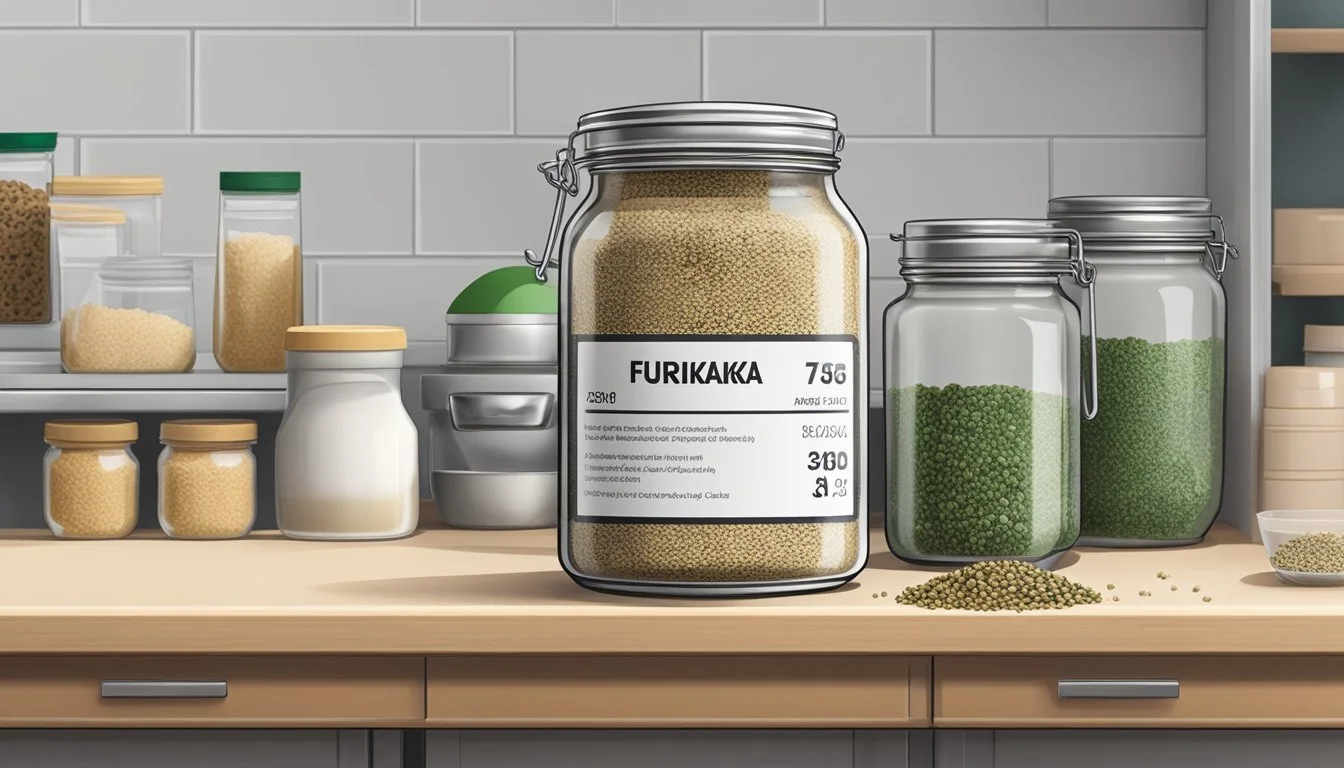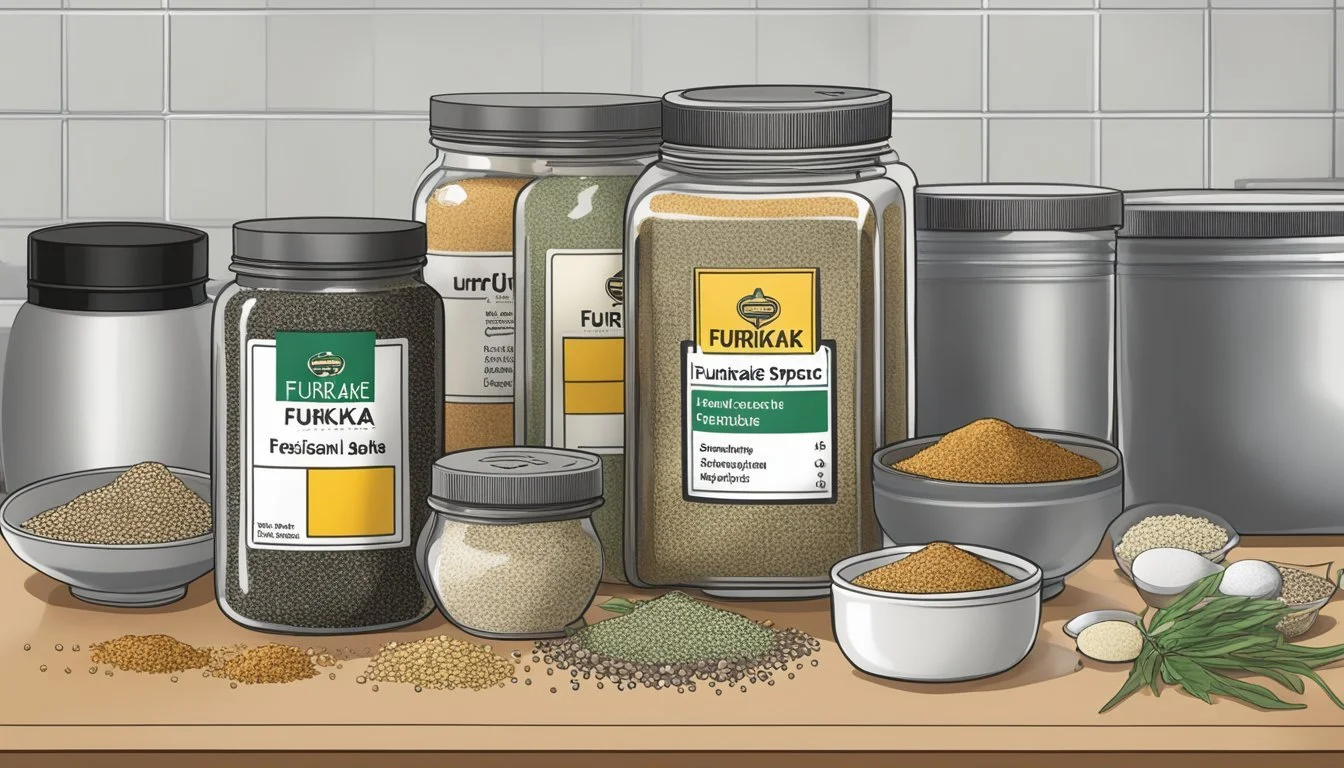Does Furikake Expire?
Understanding Shelf Life and Storage
Furikake, a popular Japanese seasoning made from a mix of dried seaweed, sesame seeds, dried fish, and other savory ingredients, is a beloved addition to many dishes, especially rice. While it is not as timeless as salt, it does come with an expiration date that users need to be aware of. Store-bought furikake can last for several months in the pantry when unopened and about a month in the fridge after opening.
The quality of furikake may diminish over time, especially if it's past the expiration date. It's best to refrigerate it after opening to extend its shelf life. While it might still be safe to consume expired furikake if it shows no signs of spoilage, its flavor and texture may not be as vibrant.
Consumers should always check the expiration date on the packaging and follow storage recommendations. Ensuring the seasoning is fresh can enhance the flavor profile of meals and maintain its intended quality.
What Is Furikake?
Furikake is a traditional Japanese condiment commonly used to enhance the flavor of various dishes.
It consists of a mixture of ingredients such as dried seaweed (nori), sesame seeds, dried fish flakes like katsuobushi or bonito flakes, salt, sugar, and occasionally spices like wasabi or shiso.
The combination of these ingredients creates a unique blend that is rich in umami, providing a savory punch to foods.
Typically sprinkled over rice, it can also be used on sushi rolls, noodle dishes, and even in takoyaki. Furikake adds a nutty flavor from the toasted sesame seeds and a salty taste from the seaweed and dried fish.
Here is a table of common ingredients found in furikake:
Ingredient Flavor Profile Notes Dried Seaweed (Nori) Savory, umami Main component Sesame Seeds Nutty, crunchy Often toasted Dried Fish Flakes Savory, rich in umami Includes bonito or katsuobushi Salt Salty Essential for flavor enhancement Sugar Slight sweetness Balances savory elements Spices (Wasabi, Shiso) Various, often spicy or aromatic Optional, adds complexity
The origins of furikake date back to the early 20th century. The term "furikake" comes from the verb 'furikakeru,' meaning "to sprinkle over." Initially developed to provide essential nutrients like calcium and potassium, it remains popular today for its versatile and flavorful nature.
This seasoning is ideal for those who want to add a quick burst of flavor to everyday meals without much preparation.
Understanding Expiration and Shelf Life
Furikake, a popular Japanese seasoning, is known for its versatility and ease of use.
Expiration Date: Packaged furikake often comes with an expiration date. This date indicates the period during which the product is expected to remain at its best quality.
Shelf Life: When stored properly, furikake can last anywhere from 6 to 12 months. The shelf life can vary based on the ingredients and whether it contains preservatives.
Storage Locations:
Pantry: Store furikake in a cool, dry place. Avoid exposing it to sunlight or heat.
Fridge: Homemade varieties may benefit from refrigeration. Furikake can last up to a month in the fridge if the container is airtight.
Avoiding Moisture: Keeping furikake away from moisture is crucial. Exposure to humidity can degrade its quality and introduce spoilage.
Maintaining Freshness: Always seal the container tightly after each use to maintain freshness. This practice helps preserve its distinct flavors and prevents contamination.
Visual and Scent Cues: Check for changes in color, texture, or smell. These signs can indicate that the furikake is no longer at its best quality.
Proper storage and regular checks can help you enjoy this flavorful condiment for an extended period.
Proper Storage Techniques
To maximize the shelf life of furikake and maintain its flavor, it is crucial to store it properly. Factors like airtight containers and storage conditions play significant roles in keeping it fresh longer.
At Home Storage Solutions
Storing furikake at home requires attention to moisture and temperature. Furikake should be kept in an airtight container to prevent exposure to humidity and contaminants.
For homemade furikake, refrigerating it can extend its shelf life. It can be stored in the fridge for up to a month. If making in bulk, consider freezing portions in small containers, which can keep the furikake good for up to one month.
Store-bought furikake generally has a longer shelf life and can be kept in a cool, dry place. If unopened, it should last several months past the printed expiration date. Once opened, store it in an airtight container and place it in the fridge for added freshness.
Commercial Packaging Benefits
Commercially packaged furikake often exceeds homemade options in longevity due to advanced packaging techniques. Packaging typically includes air-tight seals and sometimes vacuum sealing, both of which help reduce exposure to air.
Commercial packages often contain desiccants, which absorb moisture, further preserving the furikake. This packaging not only extends shelf life but also maintains the seasoning’s texture and flavor over time.
Additionally, packaging often includes resealable features. This makes it convenient for ongoing use without needing to transfer to another container, ensuring it remains sealed tightly.
In summary, storage and packaging materials are pivotal in extending the freshness and usability of furikake, regardless of its source. Using airtight containers and keeping it cool and dry can maximize its shelf life effectively.
Signs of Expired Furikake
Furikake can lose its quality over time, and recognizing the signs of expired furikake ensures food safety.
1. Color Changes:
Expired furikake often displays noticeable color changes. Fresh furikake has vibrant, distinct colors. If the seasoning appears dull or has altered hues, it may be time to discard it.
2. Texture Alterations:
With time, furikake may experience texture changes. Fresh furikake should be free-flowing and dry. If it feels clumpy, moist, or sticky, it's a strong indicator that the seasoning has gone bad.
3. Smell and Taste:
The smell is another clue. Fresh furikake has a pleasant, appetizing aroma. If it emits a rancid or unusual odor, it's best to avoid using it. Similarly, a strange or off-putting taste indicates expiration.
4. Expiration Date:
Always check the packaging for an expiration date. Note that this date typically refers to the unopened state. If the furikake is used past this date but shows no signs of spoilage, it may still be safe, but the quality could be compromised.
5. Quality Reduction Over Time:
Even without distinct spoilage characteristics, the seasoning's quality, including taste and flavor intensity, diminishes with age. For the best culinary experience, it's advisable to use furikake within the shelf life recommended by the manufacturer.
Examining these signs helps ensure that furikake contributes positively to your dishes.
Health and Nutrition Aspects
Furikake is prized for its distinct umami flavor and versatility in enhancing various dishes, especially rice. Besides its flavor, furikake offers several nutritional benefits.
Furikake often contains calcium, derived from crushed sesame seeds. These seeds are also a good source of omega-3 fatty acids, which are beneficial for heart health.
Nutrients in furikake can vary depending on its ingredients. Traditional ingredients may include dried fish, seaweed, and sesame seeds, each contributing different nutritional values.
Though nutritious, furikake can be high in sodium. It is important for individuals monitoring their sodium intake to use furikake sparingly.
For those with dietary restrictions, it’s possible to find gluten-free versions of furikake. Checking labels is crucial for individuals with gluten intolerance or celiac disease.
The texture of furikake adds a pleasant crunch to meals, making it an appealing addition not just for taste but also for mouthfeel.
While it enhances meals nutritionally and flavor-wise, moderation is key due to its potential high sodium content. Always check the ingredient list to ensure it aligns with dietary needs and preferences.
Culinary Uses of Furikake
Furikake is a versatile Japanese seasoning that elevates a variety of dishes with its combination of flavors and textures. From simple rice dishes to more intricate recipes, it adds a delightful umami taste that enhances every meal.
Enhancing Flavor in Meals
Furikake is most commonly sprinkled over steamed rice, transforming a simple bowl into a flavorful treat. It's a staple in making onigiri (rice balls), adding a burst of taste in every bite. This seasoning also complements salads, giving them a unique twist with its distinctive crunch and savory notes.
Miso soup benefits from a sprinkle of furikake, introducing an additional layer of umami. It can also be added to scrambled eggs, turning an ordinary breakfast into something special.
Furikake works well on soups and broths too. A light dusting can enhance the overall flavor profile, making each spoonful more satisfying.
Specialty Recipes
In more elaborate dishes, furikake can be a crucial ingredient. For example, it is often used in okonomiyaki (a savory Japanese pancake) to add flavor and texture. When making homemade furikake, integrating elements like bonito flakes, sake, and soy sauce can create a personalized version that fits specific taste preferences.
Furikake can even be incorporated into fusion cuisine, such as seasoning French fries or tofu for a Japanese twist. It’s also popular on poke bowls, adding both flavor and visual appeal.
For a special touch, some chefs use furikake to season grilled fish or meat, enhancing the dish with a hint of nori and sesame seeds. It can also serve as a topping for avocado toast, blending traditional and modern culinary practices seamlessly.
Variants and Customizations
Furikake comes in various types, each with its unique flavor profile. Store-bought furikake often contains a mix of dried seaweed, sesame seeds, and fish flakes. Some versions include msg for an umami boost.
Homemade furikake offers endless customization options. Tamari sauce and mirin can add depth and sweetness. Poppy seeds can be incorporated for a subtle nutty flavor.
Common ingredients in homemade furikake include dried shrimp, miso powder, and dried vegetables. These ingredients not only add flavor but also enhance the nutritional value.
Different regions in Japan have their own furikake variants. Katsuo furikake uses dried bonito flakes, while shiso furikake features perilla leaves. Salmon furikake includes dried salmon bits, often enjoyed over rice.
Customizations are endless. For instance, some people add nori flakes, sliced almonds, or chili flakes to adjust flavor and texture.
Here’s a simple comparison:
Ingredient Store-Bought Homemade Seaweed Common Customizable Sesame Seeds Included Optional Fish Flakes Often Present Varies MSG Regularly Added Optional Tamari Sauce Not Common Optional, Adds Salty Flavor Mirin Rarely Used Optional, Adds Sweetness Poppy Seeds Not Included Optional, Adds Nutty Flavor
Both store-bought and homemade versions offer versatility. Customizing furikake allows for personal taste preferences and dietary restrictions while maintaining its essence as a flavorful seasoning.
Cultural Context and History
Furikake is a renowned Japanese seasoning that has become a staple in the culinary landscape of Japan. It traditionally consists of dried fish, sesame seeds, chopped seaweed, sugar, salt, and monosodium glutamate.
Origins of Furikake trace back to the early 20th century. It was initially developed as a nutritional supplement to address calcium deficiencies in the Japanese diet.
The term furikake combines two Japanese verbs, furu (to shake) and kakeru (to sprinkle), highlighting its primary use as a sprinkle-on condiment.
Chopstick Chronicles and other contemporary food blogs often highlight furikake's versatility. It enhances the flavor of rice, noodles, and even salads.
While furikake was initially medicinal, it has evolved over the years. Its popularity stems from World War II when it was used to make simple meals more palatable.
Modern variations now feature ingredients such as shiso (perilla leaves), bonito flakes, and egg. These variations reflect regional tastes and preferences across Japan.
Notable brands like JFC’s Shiso Fumi Furikake and Trader Joe’s Nori Komi Furikake illustrate its broad appeal and extensive market presence.
Despite these changes, furikake continues to symbolize a vital part of the Japanese diet, deeply rooted in the country's culinary history.







